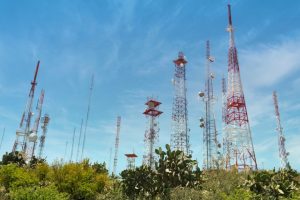The moai, the iconic stone statues of Easter Island (Rapa Nui), have fascinated scientists, archaeologists and visitors for centuries. These colossal monuments, which can reach up to 10 meters in height and weigh more than 80 tons, raise intriguing questions about how an ancient civilization managed to erect and transport these gigantic figures.
The Creation of the Moais
Construction of the moai began around 1100 AD and continued until the 17th century. These statues were carved from volcanic tuff, a relatively soft rock, extracted from the Rano Raraku volcano, which became the main sculptors’ workshop on the island. The moai were sculpted directly in the quarry, from where they emerged as unfinished figures attached to the bedrock.
-
Carving Techniques:
- Sculptors used harder stone tools, such as basalt, to carve the moai. Process that involved first carving the front and sides of the statue, leaving the back attached to the quarry. Once almost finished, the statue was carefully separated from the bedrock and the back was carved.
- Design and Symbolism:
- Moais are characterized by their large heads, which represent approximately one third of the statue’s total height. It is believed that these monuments were built in honor of important ancestors, symbolizing power and authority. The eyes, which were originally inlaid with white coral and red or black volcanic stone, were added at the final destination, giving the statues an imposing and almost living appearance.
Transportation of the Moais
One of the biggest enigmas is how the ancient Rapanui transported the moai from the quarry to their ahus (ceremonial platforms) scattered throughout the island, sometimes at distances of up to 20 kilometers.
-
“Walk” Theory:
- One of the most accepted theories currently is the proposal that the moai were “walked” to their final destinations. This theory suggests that the Rapanui used ropes to swing the statues from side to side, moving them forward in a back-and-forth motion. This method has been demonstrated in modern experiments, showing that with proper coordination, a relatively small group of people could have transported the statues in this way.
- Sleds and Rollers:
- Other theories suggest that the moai were transported using wooden sleds and rollers. The Rapanui could have placed the statues on sleds and then dragged them on wooden rollers. Although this theory is also plausible, the deforestation of the island and the lack of evidence of large quantities of wood available have led to this hypothesis being questioned.
Erection of the Moais
Once transported to their destinations, the challenge was to erect these gigantic monoliths on their ahus. This process has also been the subject of intense studies and various theories.
-
Earth Ramps:
- One prominent theory suggests that the Rapanui built earthen ramps to raise the moai. The statues could have been pushed or pulled up these ramps until they were upright on the platform. The ramps were then removed and the final position of the statue was adjusted.
- Leverage Techniques:
- Another hypothesis is the use of leverage techniques, where the moai were placed in position using a combination of wooden levers and ropes. This method could have allowed a coordinated group of people to slowly lift the statue to its upright position.
The construction, transportation and erection of the moai on Easter Island is in any case a testimony to the ingenuity and skill of the ancient Rapa Nui. Although the exact techniques may remain a matter of debate, the most recent theories, supported by practical experiments and archaeological studies, bring us closer to understanding how this remote civilization achieved such a monumental feat. Moai are not only symbols of Rapa Nui’s rich history and culture, but also amazing examples of the human ability to overcome seemingly insurmountable challenges.











![[Img #72871]](https://thelatestnews.world/wp-content/uploads/2024/06/The-moai-of-Easter-Island-the-secrets-of-its-erection.jpg)


![[Img #74130]](https://thelatestnews.world/wp-content/uploads/2024/10/Richard-Dawkins-The-scientist-who-changed-our-understanding-of-evolution-300x200.jpg)
Add Comment